Now’s the time, right? It seems coach Jim Harbaugh’s Michigan Wolverines have never had a better chance to get over the hump than they do in 2019. Ohio State is finally not employing Harbaugh conqueror Urban Meyer anymore. Penn State has a new quarterback. Michigan State could still be hopeless offensively. The dominoes are all lined up and ready to be tipped.
Ohio State, Penn State and Michigan State are also all potential top-15 teams. The Buckeyes still have all the talent in the world. Penn State could have its best defense yet under coach James Franklin, and said new quarterback Sean Clifford is pretty well-regarded. And hey, Sparty has beaten Michigan and won tons of games without an offense before. This still will be a heavyweight division in 2019. Michigan’s not going to be able to back into a breakthrough.
A quick reminder on terminology: S&P+ is the tempo- and opponent-adjusted efficiency measure I created at Football Outsiders in 2008.
Teams are listed below in order of S&P+ projections. Click here for the Big Ten West preview.
Jump to a team:
Ohio State | Michigan | Penn State | Michigan State
Indiana | Maryland | Rutgers
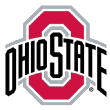
2018 record and rankings: 13-1 (no. 6 in S&P+, No. 4 in FPI)
2019 S&P+ projection: 9.8 wins (No. 7)
2019 FPI projection: 8.7 wins (No. 13)
In 1996, Sonny Lubick’s Colorado State offense dramatically improved its passing. Moses Moreno, in his first full season as a starter, threw for 2,921 yards with a 141.4 passer rating (CSU had managed just a 118.5 the year before), and a receiver trio of Geoff Turner, Jeremy Calhoun and Ronald Antoine combined for 2,093 yards and 13 scores.
It’s obviously difficult, 20-something years later, to divvy out credit for such an improvement, but you figure receivers coach Dan Hammerschmidt, in his first season in Fort Collins, had a role to play in it.
You could also say that this was the last time someone both succeeded and truly topped Urban Meyer.
Meyer had left to become Lou Holtz’s receivers coach at Notre Dame that March. It was his last stop before embarking on a remarkably successful head-coaching career. And be it Joker Phillips at Notre Dame, Gregg Brandon at Bowling Green, Kyle Whittingham at Utah, or Will Muschamp at Florida, no one since Hammerschmidt has been able to top Meyer’s high moments at each stop. (Whittingham admittedly has matched the achievements but hasn’t topped them.)
Now, Ohio State isn’t Bowling Green, Utah or even Florida, historically. The Buckeyes have enjoyed 27 top-5 finishes, and Meyer was responsible only for five of them. The bar is always almost astronomical for the Buckeyes, Meyer or no Meyer.
Still, in seven years with Meyer at the helm, Ohio State won 91 percent of its games and, yes, finished in the top five five times. Jim Tressel (0.828 win percentage and seven top fives in 10 years) and Woody Hayes (.761 win percentage and 10 top fives in 28 years) couldn’t match those rates.
This is a long way of saying that with Meyer retiring last winter following a controversial and at times uncomfortable fall in Columbus, Ryan Day takes over at a time when the bar is even more impossibly higher than normal. The next time Ohio State wins fewer than 11 games or finishes worse than 12th in the AP poll will be the first time since 2011.
The odds that any of those things happen in 2019? Not that great. And that’s an amazing thing to say about a team that just lost a legendary coach, the No. 2 pick in the draft (Nick Bosa), a first-round quarterback (Dwayne Haskins), seven other picks, and most of the starting offense.
There really are a lot of new players in new places, though.
• Georgia transfer and 2018 blue-chipper Justin Fields is the de facto quarterback, and thanks to outgoing transfers, Day had to go take reaches on a couple of others — former WVU backup Chris Chugunov and former Kentucky backup Gunnar Hoak. Fields simply cannot get hurt this year.
• Four players caught more than 26 passes last season, but only one, K.J. Hill, returns. Granted, seniors Austin Mack and Binjimen Victor could probably stand to take on more responsibility, and sophomore Chris Olave was amazing in limited opportunities (13 targets, 12 catches, 197 yards). This unit might be just fine.
• Four of five offensive line starters are gone as well. In addition to left tackle Thayer Munford, this will be a mix of career backups, young blue-chippers, and Rutgers transfer Jonah Jackson. Turnover is not really what you want here, especially after last year’s run game failed to impress.
Running back J.K. Dobbins could benefit from a partnership with a more mobile quarterback in Fields (assuming he’s not protected in too much bubble wrap to move effectively). The receiving corps could be fine, too. But there are a lot more questions than normal here, which is why FPI projects the Buckeyes to fall to 27th on offense.
The defense could pick up some slack, though. It’s the least it can do after struggling (by Ohio State standards) last fall. The Buckeyes slipped to 26th in Def. S&P+, their worst ranking since 2013 and second worst since 1990. Efficiency came and went, but the big plays the Buckeyes allowed were utterly enormous.
You can blame youth for at least some of that. The top four linebackers were all sophomores, and five of last year’s top eight defensive backs were either frosh or sophs. End Chase Young will be one of the best pass-rushers in the Big Ten, three of those glitchy sophomore linebackers made at least 7.5 tackles for loss, and the safety corps, led by Jordan Fuller, has loads more experience this time around. New defensive coordinator Greg Mattison should have more than enough to at least get this unit back into the top 15 or so.
Michigan Wolverines
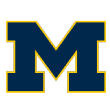
2018 record and rankings: 10-3 (No. 10 in S&P+, No. 6 in FPI)
2019 S&P+ projection: 9.0 wins (No. 9)
2019 FPI projection: 10.5 wins (No. 5)
Just as a program’s overall fortunes can flip with a coaching change, so, too, can a rivalry. Ohio State’s Woody Hayes was 12-6 against Michigan when Bo Schembechler took over in Ann Arbor. He went 4-5-1 from there. A couple of decades later, Michigan’s Lloyd Carr went 5-1 against John Cooper’s Ohio State, then just 1-6 against Jim Tressel.
A coaching change is a roll of the dice, an invitation for fate to begin a brand-new story. It’s why, as fans, we’re probably a little too willing or enthusiastic about calling for change. It’s also perhaps why Jim Harbaugh is in the middle of the most important offseason of his career.
Harbaugh has been undeniably successful in his four years (how has it only been four years?) back at his alma mater.
Over the previous seven years and two coaching tenures, the Wolverines had gone just 46-42. They had just one AP top-20 finish and had just twice ranked better than 39th in S&P+. They weren’t bad, they were just increasingly unimportant.
Harbaugh has by any definition changed that. He has averaged 9.5 wins per year and an S&P+ ranking of 9.8. He has fielded a top-10 defense (per S&P+) every season. He is 32-3 in the regular season against teams not named Notre Dame, Michigan State, Penn State and Ohio State.
He was also 0-4 against Urban Meyer. Three of the losses were by double digits. Ohio State was the hurdle the Wolverines simply couldn’t get past. That might not change now that Ryan Day is in charge in Columbus, but it’s an opportunity for change. Can UM take advantage?
In many ways, the answer depends on new offensive coordinator Josh Gattis. For as strong as Harbaugh’s defenses have been, UM has yet to rank better than 25th in Off. S&P+. Michigan’s offense has been mostly fine against the mortals on the schedule but has lacked creativity and spice against better defenses. Harbaugh has tasked Gattis — James Franklin’s former receivers coach at Vanderbilt and Penn State and Alabama’s offensive co-coordinator in 2018 — with changing that.
An underdog by nature — he was an all-ACC safety for Wake Forest during the Demon Deacons’ miraculous 2006 conference title run, and he helped Franklin to briefly turn Vanderbilt into a nine-win program — Gattis has spent the past few years helping blue bloods to become their best offensive selves. This is the first time he’ll have the full reins to an offense, though, and it appears he wants to open things up a bit and create more space to attack.
It starts, of course, with Shea Patterson. The former Ole Miss quarterback mostly lived up to the hype in his first year up north, completing 65 percent of his passes with a 22-to-7 TD-to-INT ratio and rushing about five times per game (not including sacks) at 7.7 yards per carry. But while he produced a 150 passer rating for the season, it was under 130 in all three losses. His most frequent target, Donovan Peoples-Jones, caught 21 balls for just 173 yards in those games.
Be it from Peoples-Jones, junior Nico Collins, or a youngster such as sophomore speedster Ronnie Bell, oft-injured former blue-chipper Tarik Black, or even true freshman and spring star Mike Sainristil, the emergence of a true No. 1, go-to receiver would help Patterson almost as much as innovation from Gattis would.
Space or no space, one assumes Michigan will still run the ball quite a bit, and with the loss of Karan Higdon and Chris Evans, it appears former walk-on Tru Wilson will get the first crack at the carries. Blue-chip freshman Zach Charbonnet might have something to say about that, though. Either way, the line could be a massive strength, returning four starters who have combined for 87 career starts and all earned either first-, second- or third-team all-conference honors last season.
Defensively, well, this is a Don Brown unit. It’s probably going to be very aggressive and very good. The depth got thinned out a good amount both on the line and in the secondary, though, and Brown will need a few new stars to emerge. End Kwity Paye, perhaps? Ace pass-rusher Josh Uche? Linebacker and returning anchor Josh Ross? Corner Ambry Thomas?
The emergence of an old star might help, too. A year after doing one hell of a Jabrill Peppers impersonation (18 tackles for loss, 11 passes defensed), nickel/OLB Khaleke Hudson was a nonfactor in 2018. That needs to change.
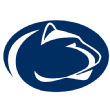
2018 record and rankings: 9-4 (No. 15 in S&P+, No. 8 in FPI)
2019 S&P+ projection: 8.8 wins (No. 14)
2019 FPI projection: 8.9 wins (No. 12)
Moments after a gutting 27-26 loss to Ohio State, Penn State head coach James Franklin made the type of state-of-the-program statement that you really don’t ever plan in advance.
“The reality is that we’ve gone from being an average football team to a good football team to a great football team and worked really hard to do those things,” Franklin said. “We’re not an elite football team yet. … Right now, we’re comfortable being great, and I’m going to make sure everybody in our program, including myself, is very uncomfortable because you only grow in life when you’re uncomfortable.”
It was the type of quiet moment on the DVD that sets up the breakthrough and the triumphant music that inevitably follow. Penn State was, at that point, 26-6 since the start of the 2016 season. The Nittany Lions were coming off of back-to-back AP top-10 finishes. Franklin had completely turned his program’s fortunes around with the addition of offensive coordinator Joe Moorhead, and while Moorhead had taken the Mississippi State head-coaching job after 2017, they had averaged 50 points per game over their first five games. The defense was young but blossoming.
In their very next game, however, they blew another late lead and lost at home to Michigan State. They got their doors blown off at Michigan a few weeks later. They rallied from there, but their run at a third straight 10-win season fell short when they lost to Kentucky in the Citrus Bowl.
This was not a bad year by any stretch of the imagination. It was the third straight season with at least nine wins, an accomplishment for a program that had only pulled off one such season in the previous six years. Plus, Franklin signed what was, per RecruitingNation, the second-best recruiting class in the Big Ten for the second straight year.
The fruits of recent recruiting could be on full display in 2019 as blue-chip quarterback Sean Clifford hands the ball to blue-chip running back Ricky Slade and throws to a receiving corps chock full of recent four- and five-star recruits. The defense will be led by former four-star end Yetur Gross-Matos and five-star linebacker Micah Parsons. Wherever there are holes on the depth chart, there are former blue-chippers fighting to fill them.
This will be an extremely young team, one that might have as few as five or six total senior starters. That says great things about where the Nittany Lions could go in 2020 and beyond. But for PSU to at least go back from good to great in 2019, a few things need to happen:
1. Clifford has to capably fill large shoes. In three seasons as a starter, Trace McSorley won 31 games and threw and rushed for a combined 11,368 yards and 105 touchdowns. He struggled with nagging injuries throughout the second half of his senior season, combined with a far less experienced receiving corps that produced a drop in both his and PSU’s stats. But he still set a high bar for his successor to clear.
2. Second-year offensive coordinator Ricky Rahne has to continue his own growth. Rahne was what we’ll call selectively conservative, especially in late-game scenarios and on passing downs. Part of that approach almost certainly came from Franklin, but the Nittany Lions appeared tentative in ways they mostly hadn’t under Moorhead. Confidence and experience in the playcalling department could result in better late-game execution.
3. A brilliant attacking defense needs to get stiffer against the run. Thanks in part to the emergence of Gross-Matos (20 tackles for loss, eight sacks, 26.5 run stuffs), Brent Pry’s defense was as aggressive and exciting as ever, finishing eighth in overall havoc rate and 11th in Def. S&P+. But opponents were able to gain at least 4 yards on 48 percent of non-sack carries, 84th in FBS. There could be a drop-off in the secondary after the loss of corner Amani Oruwariye and safety Nick Scott, but the pass rush could be dynamite … as long as there are pass-rushing opportunities.
After missed opportunities and so many gut-wrenching losses even during this resurgence — a 42-39 loss to Pitt in 2016 and a 39-38 loss to Ohio State in 2017, both of which kept them out of the College Football Playoff, plus three 2018 losses by a combined eight points — there’s no time like the present when it comes to figuring out how to clear the remaining hurdles on the Eliteness checklist.

2018 record and rankings: 7-6 (No. 30 in S&P+, No. 32 in FPI)
2019 S&P+ projection: 7.4 wins (No. 23)
2019 FPI projection: 8.8 wins (No. 14)
I love a good thought experiment.
There is a typical rhythm to college football and most sports. A struggling head coach or coordinator gets fired. An up-and-coming program loses its head coach to a bigger school, or loses its breakthrough star quarterback and regresses back to the mean. Aside from a glorious blip every now and then, the ruling class rules.
I get excited anytime that general rhythm is disrupted. As he is against Big Ten offenses, Michigan State head coach Mark Dantonio is pretty good at disrupting any rhythm.
First of all, he’s still at Michigan State. He didn’t jump to a bigger school after going 22-5 in 2010-11 or 36-5 from 2013 to 2015. He didn’t get fired after going 3-9 in 2016, either. He will enter his 13th season in East Lansing this fall.
He has gone against rhythm when it has come to attempting to fix his offense, too.
The Spartans’ offense has grown more and more hopeless for a while. After leaping to 12th in Off. S&P+ in 2014, it fell to 30th in 2015, 55th in 2016, 72nd in 2017 and 112th last fall. After a brief slip, the MSU defense, Dantonio’s calling card, was as good as ever in 2018. But the offense was an outright detriment. MSU scored 13 or fewer points in five of six losses and exactly six in each of the last three.
There’s a difference between having a plodding, physical and not-that-creative offense and having one that can’t actually pull off being plodding and physical. Michigan State has, for a while now, been a team that wants to run the ball but can’t, and things hit a potential low point last season. The Spartans ranked a ghastly 122nd in marginal efficiency. Their running backs averaged just 3.8 yards per carry.
So you fire your offensive coordinator and bring in a bright, young, energetic new guy, right? That’s what’s supposed to happen?
Nah, Dantonio just gave everybody a different job.
Quarterbacks coach Brad Salem is now running backs coach and took over as offensive coordinator. Co-coordinator and RBs coach Dave Warner is now quarterbacks coach. Co-coordinator and tight ends coach Jim Bollman is now offensive line coach. Offensive line coach Mark Staten is now tight ends coach. Assistant DBs coach Don Treadwell is now receivers coach, and receivers coach Terrence Samuel is now assistant DBs coach.
Dantonio literally just gave everybody a different name plate! That’s amazing! And it was the most Dantonio possible move.
Will it work? Who knows? The odds are pretty good that MSU will improve this year, however, simply because there’s not much more room to fall. The odds are pretty good that there will be fewer injuries, too. By my count, only three intended starters started all 13 games. The Spartans’ offense needs a definitive upgrade when it comes to creativity and life, but simply keeping the right guys on the field more will help immensely.
Thanks in part to constant shuffling, the two-deep will have a ton of experience, from quarterback Brian Lewerke, to running backs Connor Heyward and La’Darius Jefferson, to receivers Darrell Stewart Jr. and Cody White, to seven offensive linemen with at least half a season’s worth of career starts.
Defensively, the Spartans were as awesome as ever last year (second in Def. S&P+), with a good pass defense and otherworldly run defense, and there’s little reason to think that will change much. Last year’s top five linemen return, including prolific end Kenny Willekes (20.5 tackles for loss) and tackle Raequan Williams, and middle linebacker Joe Bachie is back as well.
The only possible issue could be depth. The Spartans lose three of last year’s top seven linebackers and three of four defensive backs, and while plenty of proven pieces remain there — Bachie and Tyriq Thompson at linebacker, senior safety David Dowell, junior corners Josiah Scott and Tre Person — they’re not too many injuries away from leaning heavily on freshmen.
If the defense is as dominant as ever and the offense is, to put it politely, less awful, then State will have at least a chance to become the team it was supposed to be last year, when the Spartans began 11th in the preseason AP poll. They get to host Penn State, and while they have to play at Michigan, they’ve pulled out wacky wins in Ann Arbor in each of the past two trips. There’s potential for a 10-win season, but only if the offense at least occasionally plays its part.

2018 record and rankings: 5-7 (No. 70 in S&P+, No. 63 in FPI)
2019 S&P+ projection: 6.7 wins (No. 46)
2019 FPI projection: 6.6 wins (No. 47)
Minus three outliers, here are Indiana’s records from 11 of the past 14 seasons: 4-7, 5-7, 4-8, 5-7, 4-8, 5-7, 4-8, 6-7, 6-7, 5-7, 5-7.
From a 20,000-foot view, Indiana might be the most consistent football program in the country. Hell, even two of the outliers (7-6 in 2007, 3-9 in 2008) have barely strayed from this remarkably tight range of outcomes. No matter what IU tries, it remains basically the same program.
The Hoosiers have upgraded their unique facilities. They’ve hired an offensive coach (Kevin Wilson). They’ve hired a defensive coach (current head man Tom Allen). On both sides of the ball, they’ve had excellent units and terrible ones.
They were 25th in Off. S&P+ in both 2013 and 2015. They were 20th in Def. S&P+ in 2016 and 25th in 2017. They were even 11th in Special Teams S&P+ in 2018. They also averaged a 96.6 defensive ranking in Wilson’s first five years, and they’ve averaged a 70.7 ranking on offense over the past three.
They’ve also been cursed with life in a murderous division. That will continue until the idea of conference pods gains traction. Since 2013, the Hoosiers have gone 2-22 against the Big Ten East foursome of Ohio State, Michigan, Michigan State and Penn State and 29-21 against everyone else. They will never have the history of these programs, and they will forever be based in a state with a more shallow pool of football talent. And they have to play all four, every year.
The 2018 season, Allen’s second in charge, was like so many others. The Hoosiers began the season 4-1 and ended up 5-3 against teams outside of the East’s big four. But they again went 0-4 against the division’s top teams, staying within single digits against only Penn State. That removed most margin for error, and when they lost to both Minnesota and Purdue by a touchdown each, that clinched a second straight bowl-free season and a 23rd in the past 26 years.
What now? Does 2019 have any hope of inserting some variety into this monotonous existence? The answer will depend on a couple of new coordinators.
After two decent but unspectacular years led by veteran playcaller Mike DeBord, Allen handed the reins of the offense over to former Fresno State OC Kalen DeBoer.
DeBoer has GRINDED for a chance at a job like this. A graduate of NAIA’s University of Sioux Falls (South Dakota), he led his alma mater to three national titles and a 67-3 record as head coach before working his way up the totem pole — he was Southern Illinois’ OC for four years, then EMU’s for three, then finally Fresno’s for the last two.
EMU’s offense improved from 118th to 72nd in Off. S&P+ under his guidance, and Fresno State’s leaped from 106th to 37th just last season. He needed a year to figure out what he had in both places, but once he did, the scoreboard lit up. He’ll theoretically have a couple of years with IU quarterback Peyton Ramsey, and we’ll see how quickly they can build a rapport.
Ramsey threw for 2,875 yards in his first year as full-time starter. He targeted seven players 30 or more times, and five are back, including seniors Nick Westbrook and Donavan Hale (combined: 84 catches, 1,098 yards, 10 TDs). The line gets a bit of a makeover, but bruising running back Stevie Scott, who posted 1,137 yards and 10 scores as a 236-pound true freshman, doesn’t need a ton of blocking to run through arm tackles.
Big plays were the primary issue for this attack — outside of the occasional burst from Westbrook, Indiana made none of them.
Defensively, Allen is asking coordinator Kane Wommack to fix sudden ailments. Despite decent experience, the Hoosiers fell from 25th to 75th in Def. S&P+, and Wommack, a former DC at Eastern Illinois and South Alabama, got promoted from LBs coach this past offseason. His main task: giving life to the pass defense. IU ranked 104th in sack rate and 107th in passing marginal efficiency allowed. They would leverage you into awkward downs and distances, but then they’d let you off the hook.
All but one member of last year’s secondary returns, but only two defenders logged more than two sacks all season, and only one is back (tackle Jerome Johnson). Can a slightly new scheme bring back the pressure so instrumental in Allen’s defensive success in 2016-17?
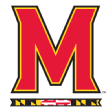
2018 record and rankings: 5-7 (No. 59 in S&P+, No. 50 in FPI)
2019 S&P+ projection: 4.9 wins (No. 67)
2019 FPI projection: 4.1 wins (No. 68)
How much can you improve as a head coach?
LSU’s Ed Orgeron, a failure as Ole Miss’ head coach in the mid-2000s, is trying his best to prove that second chances can work out. His second Tigers team went 10-3, and his third has top-five potential. His oddities and misdeeds in Oxford damaged his reputation, but he learned, plotted out what he would do differently, and waited for a shot. It appears he’s making the most of it.
Consider Orgeron a role model of Mike Locksley’s. The 49-year-old former New Mexico coach had to wait a while himself for a second chance. He finally got it this past winter.
If Orgeron was a failure at Ole Miss, Locksley was an outright disaster in Albuquerque. He didn’t just go 2-26 over parts of three seasons with the Lobos — in 88 seasons, UNM has won zero games or one game eight times, and he’s responsible for nearly half of them — he went 2-26 while getting accused of sexual harassment (an issue that was later resolved) and getting suspended for a physical altercation with an assistant.
His road back to a head coach’s office spanned nearly a decade. And it started at Maryland. He took over as Randy Edsall’s offensive coordinator in 2012, and after Edsall was fired in 2015, Locksley signed up to be part of the Nick Saban Rehabilitation Project. He served as an Alabama analyst in 2016, moved up to offensive co-coordinator in 2017, then jumped to sole coordinator in 2018.
Locksley’s reputation as an ace recruiter, his D.C.-area roots and his Maryland experience (he spent 10 years in College Park over two stints) were obviously draws when UM elected not to retain interim head coach Matt Canada after 2018. And now we get to find out if he can pull an Ed O.
For reasons that expanded far past the football field, the year 2018 was pretty hellish for the members of the Maryland Terrapins football team. In May, offensive lineman Jordan McNair collapsed during a summer workout, dying two weeks later, Within a couple of months, ESPN would report about a toxic culture within the program, and head coach DJ Durkin was put on administrative leave soon after. With Canada in charge of the team, the university put out a report of the wrongdoings that took place with McNair’s handling, and despite a strange amount of booster support for Durkin, he was officially fired in late October.
Throughout all of this, the team played 12 games. It played some of them pretty well. The Terps beat Texas to start the season (an annual tradition now) and walloped Minnesota on the way to a 3-1 start. They blew out Rutgers and Illinois later on, but thanks to a few blowout losses, they needed either a road win over Indiana or a home upset of Ohio State to reach bowl eligibility. They lost the former by two points and the latter by one. Canada did a pretty good job of keeping the team together, but the school elected to bring Locksley back to town.
To right previous coaching wrongs, Locksley loaded his coaching staff with veterans. Former ECU head coach Scottie Montgomery is his offensive coordinator, former Florida and South Carolina defensive coordinator is his DC, former UNC defensive coordinator John Papuchis is his ILBs coach, former Kentucky head coach Joker Phillips is his WRs coach, etc. To better avoid landmines, he brought in guys who have stepped on them, too.
The two-deep underwent churn in both directions. Quarterback Kasim Hill and nose tackle Adam McLean left over the summer, but transfers such as Virginia Tech quarterback Josh Jackson, Clemson linebacker Shaq Smith, Ohio State linebacker Keandre Jones, Buffalo tight end Tyler Mabry and Virginia Tech WR-turned-DB Sean Savoy could all play immediate roles, and the Terps could get a boost from the return of running back Lorenzo Harrison III from injury. These veterans will pair with some exciting sophomores: RB Anthony McFarland, WRs Jeshaun Jones and Dontay Demus, and rush end Durell Nchami, to name four.
Expectations will be meager out of the gates. Maryland is projected 67th in S&P+ and 61st in FPI. Its odds of bowling will depend mostly on its ability to maneuver through tight games (at Temple and Purdue, at home vs. Indiana and Nebraska), but really, the main goal for Locksley’s first season is simply to see what lessons he has learned and what he’s doing to make the most of his second chance.
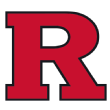
2018 record and rankings: 1-11 (No. 108 in S&P+, No. 100 in FPI)
2019 S&P+ projection: 2.6 wins (No. 108)
2019 FPI projection: 3.5 wins (No. 92)
It wasn’t that long ago that Rutgers seemed to have turned a corner. The Scarlet Knights of Greg Schiano had peaked with their miraculous run of 2006, which featured their first-ever bowl win and second-ever top-15 finish. But their ability to sustain most of their gains was almost as impressive. Ending a 12-year streak of losing seasons in 2005, this historically moribund program went to nine bowls in 10 years, winning six of them.
From 2005 to 2014, Rutgers created an annual presence in the postseason, spending parts of four seasons ranked and winning at least eight games seven times. It was at the end of this run that the Big Ten came calling.
The Big Ten thought it was bringing in a sturdy northeastern football program. Instead, it got the Rutgers of the 1990s. Kyle Flood’s Knights went 8-5 in their first year in the league, losing a few blowouts but beating Michigan and fellow conference newcomer Maryland, nearly knocking off Penn State, and walloping North Carolina in the Quick Lane Bowl.
That was the end of the era of good feelings. Flood was suspended and fined in 2015 for contacting a professor about a player’s grades, and RU plummeted to 4-8 and 101st in S&P+. Both Flood and Rutgers’ embattled athletic director were fired, and the school attempted to make the most Big Ten hire possible, bringing in former Wisconsin and Ohio State defensive coordinator Chris Ash.
Over the course of three seasons, Ash has basically had one good month. Rutgers won three of four Big Ten games in the middle of 2017, beating sketchy Illinois and Maryland teams and upsetting Purdue.
Outside of that month, Ash is 4-28 with two wins over FBS teams and none over Big Ten opponents. His offense underwent a total youth movement in 2016 and then did so all over again in 2018. Even worse, eight players were involved in a credit card fraud scheme last year as well. This team was hopeless on the field and making the wrong kind of news off of it.
That Ash got a fourth year in charge despite his 7-29 record says a lot about the job that was originally facing him. But it’s hard to see him getting a fifth year without significant improvement. It’s also hard to see significant improvement taking place.
Let’s spin that around, however. If Rutgers turns things around enough to save Ash’s job, how does it happen?
1. Much, much better quarterback play. Freshman Artur Sitkowski was given the reins last season and posted some of the most unfortunate stats you’ll ever see: 49% completion rate, four touchdowns to 18 interceptions, and a QBR of 12.8. Truly horrid. Transfers McLane Carter (Texas Tech) and, if eligible, Johnny Langan (Boston College) are coming for Sitkowski’s job, and Carter in particular could potentially take it. But someone, anyone, has to display basic competence, and Sitkowski obviously wasn’t ready to last season.
2. Raheem Blackshear gets help in the skill corps. Blackshear was RU’s leading rusher (with only 586 yards) and leading receiver (with only 367). He was dreadfully inefficient, but there weren’t many other options. Some of last season’s youngsters — sophomore RB Isaih Pacheco, junior WR Bo Melton, sophomore WRs Shameen Jones and Eddie Lewis — need to prove last year’s time was developmental in some way.
3. Like, a couple of big plays. Rutgers was second worst in FBS in gains of 20-plus yards (26), 40-plus yards (four), etc. There were no easy points whatsoever.
4. Something less sieve-like in run defense. The pass defense, led by an experienced secondary, was downright good last year, but because RU was always trailing, and because the run defense was so bad, no one ever had to pass. Only two of last season’s top six DBs return (corner Avery Young is a potential stud, at least), but new coordinator Andy Buh’s line will be relying far less on freshmen and sophomores than last year’s defense. Maybe ends Mike Tverdov and Elorm Lumor can take a step forward? Linebacker Tyreek Maddox-Williams? Michigan transfer Drew Singleton will help.
That’s a pretty lengthy list, and that’s what it’ll take to just get back to 5-7 or so. RU is a projected favorite just twice all season (against UMass and Liberty at home) and is a double-digit underdog in the other 10 games. There’s no such thing as a lost cause in July, but this is close. But hey, Rutgers fans will always have 2006.

